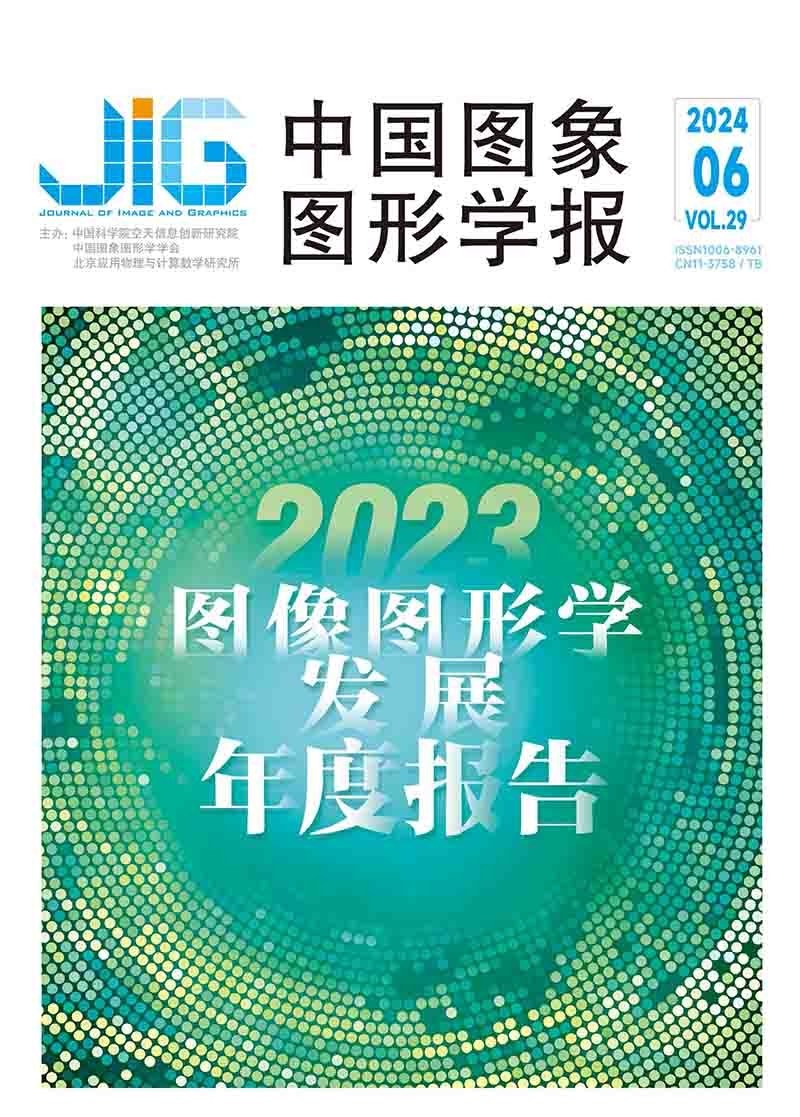
高光谱图像变化检测技术研究进展
摘 要
相对于自然图像和多光谱图像,高光谱图像包含丰富的空间—光谱信息,不仅能够保留目标的空间信息,还能够获取高度可辨别的光谱信息。因此,如变化检测、目标追踪等高光谱图像处理技术在对地观测任务中得到了广泛应用。然而,在高光谱图像变化检测的过程中仍然存在许多问题与挑战。如高光谱图像的高维复杂性、光谱差异性以及存在光谱混合等问题,影响变化检测效果。得益于深度学习理论的深入研究,高光谱图像变化检测技术研究得到了极大的发展。本文对现有基于深度学习的变化检测方法进行全面分析总结,按照高光谱图像采集条件是否相同,将其分为同构高光谱图像变化检测以及异构高光谱图像变化检测。其中,从特征提取的网络结构优化和特征提取前混合像素处理两个角度,又将同构高光谱图像变化检测方法进一步分为基于时序依赖和空谱信息提取的方法以及基于端元提取和解混的方法,分别总结各类方法的特点和局限性,并讨论未来的研究重点。此外,面对不同传感器获取的异构高光谱图像数据,现有的方法基于图论学习图像的结构关系,并基于图像变换将其转换至公共域从而进行变化检测处理。本文从高光谱图像变化检测领域的新设计、新方法和应用场景出发,通过综合国内外前沿文献来梳理该领域的主要发展,重点论述高光谱图像变化检测领域的发展现状、前沿动态、热点问题及趋势。
关键词
Survey of hyperspectral image change detection method
Ding Chen1, Chen Jingyi1, Zheng Mengmeng1, Zhang Lei2, Wei wei2, Zhang Yanning2(1.School of Computer Science, Xi'an University of Posts and Telecommunications, Xi'an 710121, China;2.School of Computer Science, Northwestern Polytechnical University, Xi'an 710072, China) Abstract
Compared with natural and multispectral images,hyperspectral images contain rich spatial-spectral information. They not only can retain the spatial information of the target but also can obtain highly distinguishable spectral information and provide more detailed target feature information. Therefore,hyperspectral images have become one of the most commonly used data types for Earth observation and are widely used in important fields that actually affect human livelihoods,such as natural disaster monitoring,urban landscape mapping,agricultural surveys,environmental management, and homeland security. Change detection refers to the timely observation of land cover changes by analyzing images of the same geographical area and different phases. It is one of the important research directions in remote sensing image processing. With the increasing popularity and application of remote sensing technology,various remote sensing image processing technologies such as target detection and change detection have played an indispensable role in Earth observation tasks, such as natural disaster monitoring,agricultural surveys,environmental management,and homeland security. The important areas for exploration are as follows. Many problems and challenges still exist in the process of change detection in hyperspectral images. On the one hand,hyperspectral images have a large number of spectral bands,which leads to too high dimensions of data. This condition easily causes dimensionality disaster. Moreover,processing high-dimensional data requires a high degree of computing resources. Therefore,in real application scenarios,hyperspectral image change detection is difficult to achieve. Data processing and method design are often easily limited by device storage performance and computing performance. On the other hand,hyperspectral images acquired at different time points may have differences in spectral response due to factors such as illumination and atmospheric conditions. They may also have inconsistencies in resolution and spatial location,which increases the complexity of change detection. Spectral mixing is also one of the important challenges facing hyperspectral change detection. Pixels in hyperspectral data may contain a variety of ground object information,which seriously interferes with the accuracy of change detection. In addition,with the rapid development of hyperspectral remote sensing technology,equipment such as drones and satellites continue to collect a large number of hyperspectral images for use in important fields such as disaster monitoring,mineral exploration,and homeland security. However,differences exist in the shooting angle,height,and resolution of the sensors configured on different devices,and the acquired hyperspectral images also have distinctions in data structures. The existing isomorphism-based change detection methods for hyperspectral images cannot be directly applied to heterogeneous hyperspectral image change detection task. Therefore,the problem of change detection in heterogeneous hyperspectral images from different types of sensors also brings new challenges to hyperspectral image change detection. Therefore,alleviating the highly complex data characteristics of hyperspectral images and designing practical and effective processing solutions are important to improve the change detection effect. Among existing change detection methods for hyperspectral images,traditional methods usually use manually designed methods for feature extraction,which may fail to effectively extract discriminative features,and selecting appropriate thresholds to accurately detect land cover changes is difficult. Research on change detection technology for hyperspectral images has been greatly developed due to in-depth research on deep learning theory. Existing change detection methods based on deep learning can be roughly divided into two categories. One is based on temporal dependence and spatial spectrum information. The extraction method uses the temporal dependence and correlation between images to obtain more discriminative features and enhance the change detection performance. The other type is the method based on endmember extraction and unmixing,which is solved by the endmember extraction and unmixing method. Spectral mixing problem for hyperspectral images aims to improve change detection accuracy. In addition,in the face of heterogeneous hyperspectral image data acquired from different sensors such as drones and satellites,existing methods learn the structural relationships of heterogeneous images based on graph theory. They convert them into the public domain based on image transformation to make changes. With regard to detection and processing,certain temporal dependencies and correlations exist between multiple input images in the change detection task. Thus,effectively utilizing the temporal dependencies and correlations between images and combining the existing deep learning module design to improve the hyperspectral image change detection effect are also current issues. Regarding the research hotspots,this study starts from the new designs, new methods,and application scenarios in the field of hyperspectral image change detection,and the main developments in this field are sorted out by synthesizing domestic and foreign cutting-edge literature. First,it introduces the key preprocessing technologies for hyperspectral image change detection. Second,for the problem of isomorphic hyperspectral image change detection,traditional and deep learning-based methods for hyperspectral image change detection are introduced, and each type of method is systematically introduced and compared according to the different implementation methods. For heterogeneous hyperspectral image change detection and spectral image change detection problem,this study introduces and summarizes the existing heterogeneous change detection methods for hyperspectral images. Next,the current status of application of change detection methods for hyperspectral images in real industrial practice is discussed. Finally,the current research and development status at home and abroad is compared,and the development trend of hyperspectral image change detection is prospected.
Keywords
hyperspectral image change detection temporal feature extraction endmember unmixing heterogeneous hyperspectral image change detection
|



 中国图象图形学报 │ 京ICP备05080539号-4 │ 本系统由
中国图象图形学报 │ 京ICP备05080539号-4 │ 本系统由